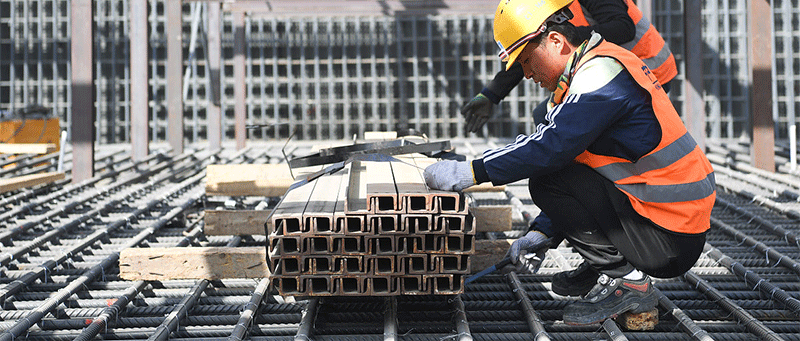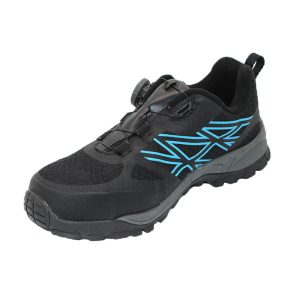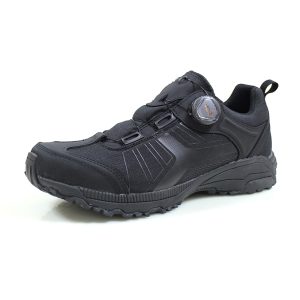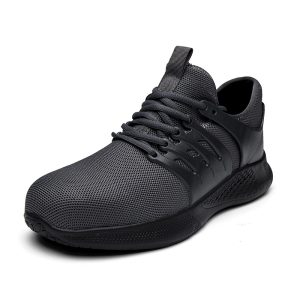How to choose the right summer safety shoes
We cannot wear slippers and need to wear summer safety shoes because of the limited protection and safety provided by slippers in the working environment. The following are the main reasons:
Protection foot: Summer safety shoes design is used to provide foot safety protection. They usually include non -slip function, wear -resistant sole, and special materials for anti -piercing or impact. These functions can prevent sharp objects or heavy objects from causing damage to the feet, such as the risk of heavy objects when working on the construction site.
Anti -slip performance: Summer safety shoes usually have a special non -slip design to provide stable walking performance. Even on the moist or slippery surface, it can provide good grip. This is important for the risk of sliding and falling in the working environment, especially in factories, warehouses, or other places that need to walk and move frequently.
Anti -electrostatic or anti -electrical strike capacity: There may be a risk of static or electric shocks in certain working environments. Summer safety shoes can be designed as anti -static or electrical anti -strike function to protect the safety of staff. This function can prevent static electricity from causing fires or avoiding electric shock accidents.
Regulations and standard requirements: In many workplaces and industries, wearing specific types of safety shoes is compulsory. According to relevant regulations or standards, slippers usually do not meet these requirements. These regulations and standards are designed to ensure the safety and health of workers and reduce the occurrence of workplace accidents.
Summer safety shoes and winter safety shoes may have some differences in design and functions to meet the needs of climatic conditions and working environment in different seasons. The following are some differences between them:
Upper material: Summer safety shoes are usually used with better air permeability, such as mesh cloth or ventilatory design to increase air circulation and heat dissipation, which helps keep the feet refreshing and dry. In winter, safety shoes may use insulation materials, such as internal fluff lining or the insulation layer to provide better warmth effects.
Non -slip performance: Summer safety shoes usually pay more attention to providing good non -slip performance in a humid or humid environment to avoid slipping and falling. Winter safety shoes may add more wear -resistant and non -slip materials to the sole design to adapt to special ground conditions such as ice and snow, muddy, etc.
Protective performance: Summer safety shoes and winter safety shoes have similar functions in protecting the safety of the foot. In addition to impact and piercing, these characteristics are related to the working environment and requirements. However, winter safety shoes may pay more attention to protecting the influence of the cold climate, such as providing better thermal insulation performance and blocking the cold wind.
Comfort: Due to the different seasons, summer safety shoes and winter safety shoes are also different in terms of comfort. Summer shoes may be lighter and ventilated in summer, so that it is easy to heat dissipation and reduce the accumulation of heat from the feet. Safety shoes may be heavier in winter, but it provides better warmth performance and windproof protection to adapt to cold weather conditions.
Selecting the right summer safety shoes need to consider the following elements:
Shoes and materials: Choose shoes and materials with good breathability to ensure the comfort and dryness of the feet in the hot summer environment. Well -ventilated mesh or breathability materials can promote air circulation and prevent feet from overheating and humidity. Common summer safety shoes include synthetic materials, nylon mesh, and good breathability leather.
Suitable shoe type: Choose shoes suitable for your foot type and work needs. The selected summer safety shoes include low -top shoes, mid -help shoes and high -top shoes. According to your working environment and personal preferences, choose the most suitable shoes to provide good support and comfort.
Comfortability and cushionability: Make sure that safety shoes in summer have sufficient cushioning performance to reduce the pressure and fatigue of the feet when standing or walking for a long time. Some shoes may be equipped with specialized cushioning technology or insoles to provide additional comfort and support.
Anti -slip performance: Make sure that safety shoes have good non -slip performance, especially in a humid or slippery working environment. Choose shoes with non -skid soles and special lines to provide better grip and stability.
Appropriate size and width: It is important to choose the right size and width to ensure that the shoes are comfortable and squeezed or squeezed without excessive friction. Measure your feet size and try to penetrate shoes to ensure the correct size.
Standard: Make sure the selected summer safety shoes meet the applicable safety standards and regulations. Different regions and industries may have specific standards, such as ASTM (US standards), EN ISO (European Standard), etc. Make sure the selected shoes meet the applicable standards to ensure that it meets the safety requirements.









